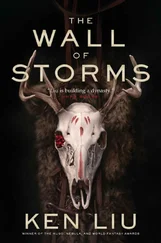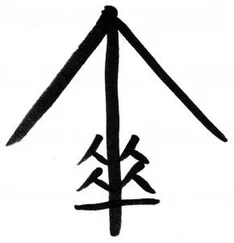For a time, none spoke. A fire-oil lamp crackled on the table, illuminating the small room’s walls. The lamp was another one of Prince Lu’s inventions, naturally. A few coins’ worth of fire-oil could keep it burning until dawn. Its smoke smelled acrid and stained the ceiling a greasy black, but it burnt far brighter than a vegetable seed oil lamp.
“What do you want me to do?” Zhu Dagun slowly sat.
“Try to reason with him first, and if that doesn’t work, whip out your knife. Isn’t that how things are always done?” Guo Wanchao said, raising his cup.
4.
Prince Lu’s origin was a complete mystery. No one had heard of him before the Song army surrounded the city. Then, after the loss of the twelve prefectures, stories of the East City Institute began to circulate through the wards. Seemingly overnight, countless novelties sprang up in Jinyang, three of which grabbed the most attention: the massive waterwheel and foundry in Central City, the defensive weaponry on the city walls, and the city-spanning internet.
Jinyang was divided into three parts, West, Central, and East. Central City straddled the Fen River; the waterwheel was installed right under a veranda, turning night and day with the river’s flow. Water wheels had long been used to irrigate fields and mill grain, but who knew that they had so many other uses? Squeaking wooden cogs drove the foundry’s bellows, and the water-dragons, fire-dragons, capstans, and gliding carts atop the city walls. The foundry held several furnaces, where the bellows blasted air over iron made molten by fire-oil. The resulting iron was hard and heavy, far more convenient than before.
The changes were even greater on the city walls. Prince Lu had laid down a set of parallel wooden rails atop the wall and ran a strong rope along the track from end to end. Press down a spring-loaded lever, and the power of the waterwheel drove the rope to pull a cart sliding along the track at lightning speed. The trip from Dasha Gate to Shahe Gate normally took an hour even on a fast horse, but with the gliding cart it took only five minutes. On the system’s maiden trip, the soldiers tied to the cart as the first passengers had screamed in terror, but a few more trips showed them the fun in it. With exposure came appreciation; they became the gliding cart operators, spending all day aboard the cart and refusing to get off. There were five carts in total, three for passengers and two for catapults. The catapults weren’t much different from the preexisting Han ones, except that they used the waterwheel to winch back the throwing arm, not fifty strong men hauling on the oxhide rope; and they no longer threw stones, but pig bladders filled with fire-oil. Each bladder also contained a packet of gunpowder wrapped in oilcloth, with a protruding fuse that was lit right before firing.
Throwing down rocks and wooden beams was a staple of siege defense, but every beam dropped and rock hurled meant one less in the city. If the siege went on long enough, the defenders usually had to take apart houses in the city for things to throw. Therefore, the East City Institute came up with a vicious new invention. Instructed by Prince Lu, the defenders tamped yellow mud into big clay pillars, five feet long and two feet across, and embedded the surfaces with iron caltrops. The construction of the mud pillars followed a specific recipe: yellow mud was covered with straw mats to stew for a week; mixed with glutinous rice paste, chopped-up straw, and pig’s blood; and then pounded down repeatedly. The caltrops studding the pillars were doused with wastewater until they rusted an unnatural red-black. Prince Lu said that they’d make the Song soldiers catch a disease called “tetanus.” Weighing two thousand six hundred pounds each, glistening a sinister yellowish bronze color, and covered all over with filthy iron caltrops, the pillars turned out to be excellent weapons for slaughter. Hundreds of pillars were secured to the top of the wall with iron chains on each end. When the Song army approached, the pillars smashed down, pulverizing scaling ladders, rams, shields, and soldiers alike. Then, with a turn of the capstan, the waterwheel winched the chains with little squeaks, and the bloodstained pillars ascended sedately toward the parapets once more.
After suffering great casualties from the pillars, the Song army changed tactics and sent Khitan captives and their own old, weak, and sick to serve as the vanguard. Taking advantage of the brief respite after their sacrifices were flattened and while the pillars were still down, the main body of the Song army advanced with ladders, siege towers, and catapults. But now the gliding cart-mounted catapults came into play. In a flash, hundreds of red, stinking, wobbling bladders took to the air, blooming into fireballs as they rained down among the Song troops. Wood crackled and soldiers screamed. The fragrance of meat roasted on fruit tree wood permeated the air. Last came the archers, sniping at anyone with a helmet plume—everyone knew that only Song officers could wear feathers on their helmet. But arrows were limited and had to be used conservatively; once the archers had shot a couple arrows each, they returned to rest, thus ending the battle.
Below the city walls was a field of char, smoke, and wailing. Above, the Han defenders poked and pointed into the distance, counting their kills. For every kill, they drew a black circle on their hand, and used the circles to collect their reward money from the East City Institute. By Prince Lu’s calculations, two million Song soldiers had died these months below the city. Everyone else, looking at the Song camps that still covered the horizon end to end, came to an unspoken consensus not to bring up the problem with statistics derived from self-reporting.
With Jinyang securely defended, Prince Lu invented the internet to keep everyone in the city from getting too bored. He first came up with something called movable type (which he claimed was cribbing from an old sage named Bi Sheng, although no one could recall ever having heard of this formidable personage). [14] Bi Sheng (毕昇) was an eleventh-century Chinese commoner printer who invented the world’s first known movable type using baked clay.
He’d first carved the text of the Thousand Character Classic in bas-relief onto a wooden board, then pressed a layer of yellow mud mixed with glutinous rice, straw, and pig’s blood—leftover material from the death-dealing clay pillars—over the printing plate. Finally, he’d peeled the whole thing off and diced it into small rectangles, thus creating a set of individual type blocks that could be freely combined and assembled. He’d placed the thousand characters into a rectangular tray, attaching every block in the back to a strand of silk thread with a spring. The thousand strands of thread were then collected into a bundle the thickness of a wrist, termed a “web.”
Similar text trays were found all over the city, while the bundles of silk threads passed through the bottoms of the walls to a network manager’s station. The end of each bundle of silk was then neatly fitted into a metal mesh by tying a small hook to the end of each thread and hanging the hooks to the mesh. These meshes lined the walls of a station, and if two text trays wanted to communicate, the manager found the two corresponding bundles and brought the metal meshes together with a twist that connected the thousand pairs of metal hooks together. The bundles were thus linked together in what Prince Lu called an “internet.”
Once a web connection was established, the users at each end could communicate through the text trays. When one side pressed down on one of the type pieces, the little spring tugged the silk thread, causing the corresponding type to sink down on the other side. Although picking out the desired character out of a thousand densely packed blocks posed quite a strain on the operator’s eyes, an experienced user could type with lightning speed. Some pedants worried that the depth and complexity of hanzi writing could not be adequately represented by such an invention. Though the Thousand Character Classic was an ingenious primer to introduce the wonders of hanzi, how could a mere one thousand characters be enough to discuss life and the universe? Prince Lu countered that they were one thousand unique characters—never mind discussing the universe, these characters had been enough for the majority of fine essays since antiquity; they were certainly enough for web users to express whatever they needed to say.
Читать дальше












